It was moments after legal shooting light when the two roosted gobblers that I’d been hen-talking to were on the ground and approaching my decoys. I readied my Mathews bow, drew when the time was right, and sent an arrow through the larger tom. My hunt was practically over before it began.
Hunting near a turkey roost has its pros, cons, rewards and risks. I’m going to take a slightly different approach with this article than I normally do with my other articles.
We’ll discuss some “frequently asked questions” related to hunting the roost, and then I’ll provide answers based on the 22 springs I’ve spent bowhunting spring turkeys. If you have questions about hunting the roost, this article should help.
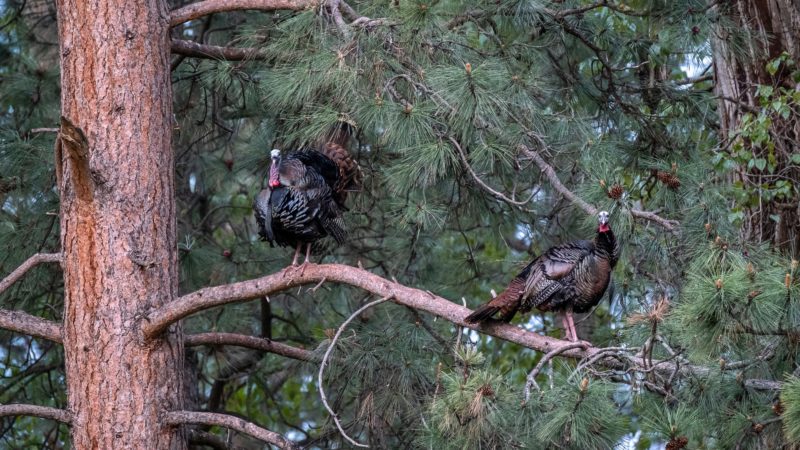
How can I Find a Roost?
There are a couple of good ways to find roost trees. First, you can glass field edges during the last half an hour of daylight. If turkeys are in a field, you’ll often be able to watch them fly up. If you’re hunting in areas with less visibility, I suggest scouting in the pre-dawn when gobblers are gobbling from the roost.
Sneak close enough to peg their location, but don’t be seen. Another great way is to pay attention when you’re scouting on foot. Watch for concentrated droppings beneath a tree that’s visibly suitable for roosting.
When a turkey has been roosting in the same place over and over, there will be lots of droppings on the ground in an area anywhere from the size of a basketball to a car hood.
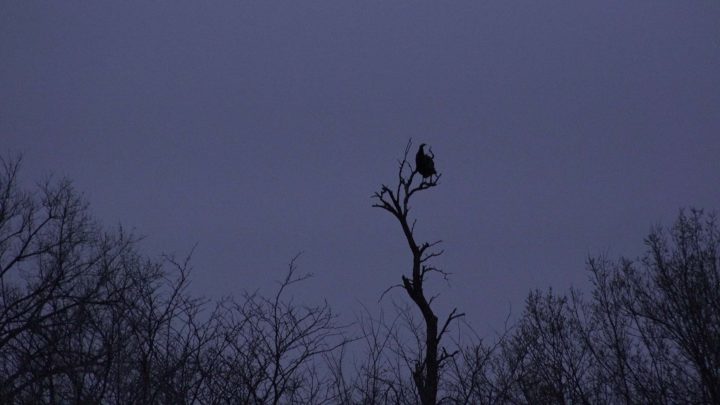
Is it Legal to Hunt the Roost?
This is the first and most important question you should ask, and the answer is easy: Check your state’s or province’s hunting regulations. I know of nowhere that it is illegal to set up near or even under a roost for a morning hunt as long as you don’t shoot before legal shooting hours.
However, I know of some states — Missouri, for example — that close legal shooting hours long before roosting time. So, if you’re hunting a state like that, of course, the answer is no, it’s not legal to hunt the roost in the afternoon.
Is Hunting the Roost Ethical?
I’m sure there are several popular opinions about this. Some hunters suggest that it’s unethical to hunt roosts in the evening even if it’s legal to do so. They reason that it’s too easy. For shotgunners, it might be too easy, but remember that bowhunters need to get the most ethical shot possible, which I believe is 20 yards and in.
Rarely is it easy to get a gobbler within 20 yards. If hunting a roost in the evening boosts the odds of getting that 20-yard-or-closer shot, then I believe it’s totally ethical as long as it’s legal. There are rarely gimmes in turkey hunting.
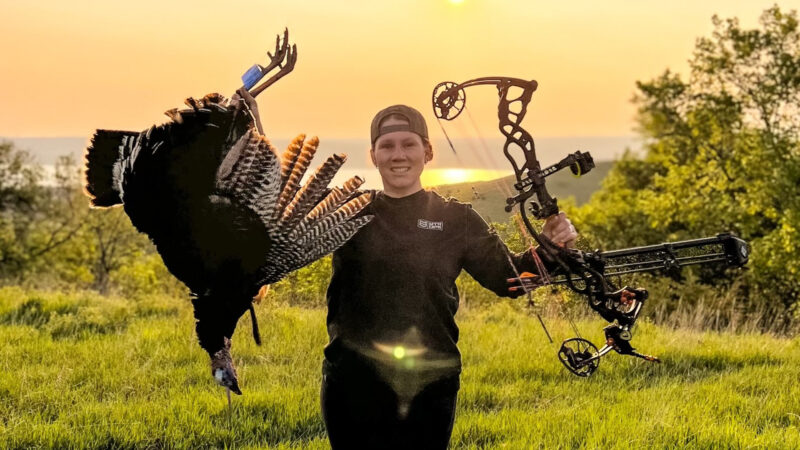
The other thing is that success is far from guaranteed. I can’t count how many times I thought I had evening turkeys pegged only to have them fly up from a different spot than I predicted. I’ve also sat many times and had the birds pull a no-show.
Once I was within 50 yards of a roost, and a flock was working toward it. I had two hen decoys out, and the live hens walked right by at 12-15 yards. The gobbler split off just before reaching the decoys, circled around the back of my blind without stopping, and then rejoined the hens 50 yards to the other side of my blind. Turkeys are predictable until they’re not.
So, is hunting the roost ethical? You’ll ultimately have to decide for yourself, but I say go as long as it is legal.
Advantages of Hunting the Roost
The obvious advantage of hunting near a roosted gobbler is knowing that you’ll be close to a bird for the morning hunt. In the afternoon, it is never a guarantee that he’ll come back to the same exact tree, but if he’s been roosting there for at least a few consecutive nights, odds are strong that he’ll be back.
If you set up just right, your decoys are also more likely to be seen (morning or evening), which is advantageous in most instances. Another advantage is that save for windy, rainy days, birds are likely to move away from the roost if they don’t give you a shot opportunity, which makes it easier to leave the woods undetected.
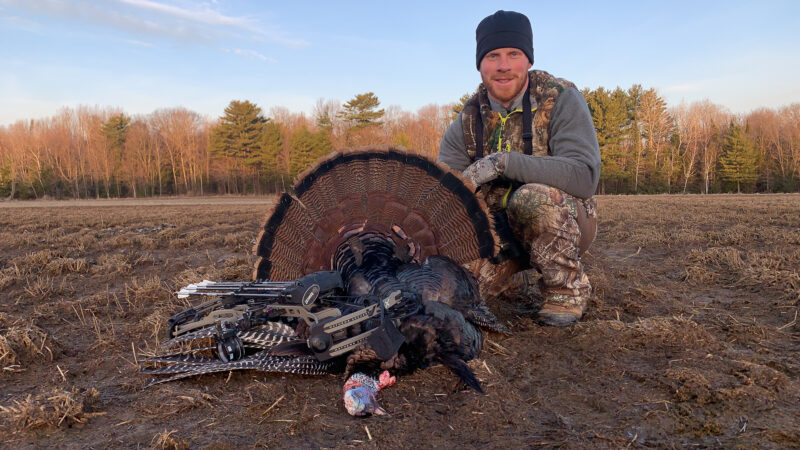
Disadvantages of Hunting the Roost
With rewards come risks. In the morning, it can be difficult to slip in close to roosted birds without alarming them or even busting them from the roost. In the evening, leaving the blind with birds roosting above you or close by is challenging. You’ll have to wait until it’s pitch dark before you slip out, and even then it’s dicey.
In the morning, toms roosted with hens are liable to go where the hens go. If your decoys aren’t enticing enough and you aren’t positioned within bow range of where the birds fly down, your hunt will be over very quickly as the hens pull the gobblers away. I’ve had a lot of fly-down successes, but I’ve also had toms go the other way many more times.
Should I Hunt Around the Roost Midday?
Great question. Although turkeys tend to travel great distances during the day, the mid-morning to midday window could be productive near a roost in certain instances. There’s always the possibility of a lone tom roaming through, and I’ve certainly had that happen a handful of times. But, here’s another situation in which it can be productive.
If you were on a henned-up gobbler near the roost in the morning and he was answering your calls but went the other way, he hasn’t forgotten about you. It’s possible that he’ll return to where he last heard your calling later on when he breaks away from the hens.
This doesn’t always happen, but during periods of the season when toms part with hens during the day, it can be a viable play if you have nothing better in your bag of tricks.
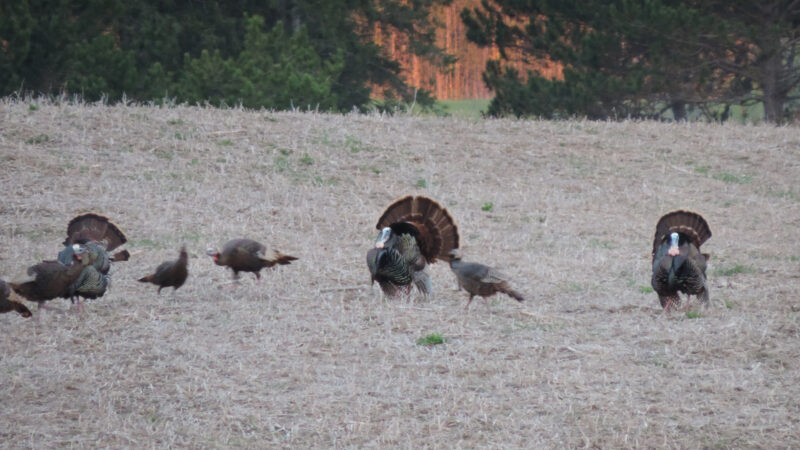
How Early to Arrive and How Close to Get
This depends on several factors. My rule of thumb is generally the earlier the better, especially if I don’t have a blind already in place. Moonlight or light pollution from a nearby city also can make it difficult to approach a roost without being detected, even well before dawn. I like to be set up and settled down about 40 minutes before legal shooting light.
As far as how close to get, well that depends, too. If I have a blind all set up and just need to climb into it, I’m comfortable being within 50 yards of roosted turkeys, unless I’m in the timber and dealing with crunchy leaves. If I have to set up a blind on arrival, I like to stay at least 125 yards away.
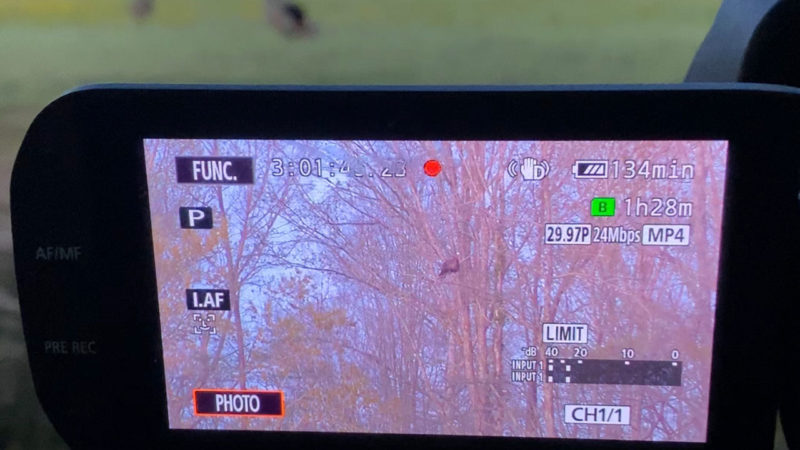
This puts my decoys close enough to trigger a response from the gobbler, but I’m far enough away that I can set up without spooking the birds. I increase that distance to 150-175 yards on dead-calm mornings. If I’m going to hunt without a blind, I can set up a lot more quietly, so I’m comfortable in those instances with sneaking within 50-100 yards of the roost.
Roosted doesn’t always mean he’s roasted, but hunting close to the roost can certainly help tip the odds in your favor at flydown.
Check out the video below for some fast-paced turkey hunting action at the roost.

 By
By 



